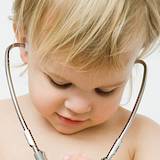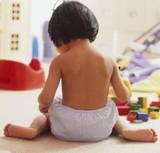Home > Hot Topics > Health & Wellbeing > Toddlers > Childproofing your home for toddlers & preschoolers
Shop
02457
https://www.under5s.co.nz/shop/Hot+Topics+Articles/Health+%26+Wellbeing/Toddlers/Tips+on+childproofing+your+home+for+toddlers+and+preschoolers.html
Childproofing your home for toddlers & preschoolers
|
Is your home really childproof? Have you minimised the potential risks or dangers which might cause your toddler or preschooler any harm? By taking a few precautions and being prepared you could prevent your kids from being seriously harmed or even save their life. Childproofing your home can help reduce the risk of burns, drowning, choking, poisoning or falls amongst other things that might occur.
|
You might also be interested in ...
15 Reasons for babies & kids to see a doctor
You should always rely on your gut instinct as you know your child best, but here are 15 common reasons when you should take young kids to a doctor or seek out medical advice.
The effects of W-sitting
We take a look at the effects of W-Sitting, why it’s not ideal and the postural and developmental issues it may cause young kids.
join usJoin us on social media for all our latest news. |
sign upSign up and receive our latest newsletters. |
|







Have you minimised the potential risks or dangers which might cause your toddler or preschooler any harm?
By taking a few precautions and being prepared you could prevent your kids from being seriously harmed or even save their life.
Childproofing your home can help reduce the risk of burns, drowning, choking, poisoning or falls amongst other things that might occur.
Childproofing your home for toddlers & preschoolers
These tips are a guideline to childproofing your home. Please bear in mind that each home is different, so use your own judgement when it comes to your kids and deciding which risks need to be reduced at your place.
Above all else, supervise your children as much as practicable to prevent an incident occurring.
General tips on childproofing your home
Childproofing your kitchen & laundry
Childproofing your lounge & living areas
Childproofing your bathroom
Childproofing your toddler or preschooler’s bedroom
Childproofing your garage
Source: This article was kindly provided by Uncle Andy - Child Safety Locks for cupboards & drawers.
Image source: fb.ru